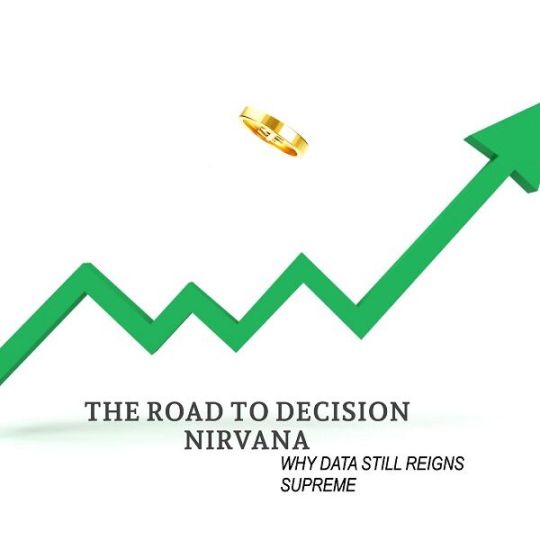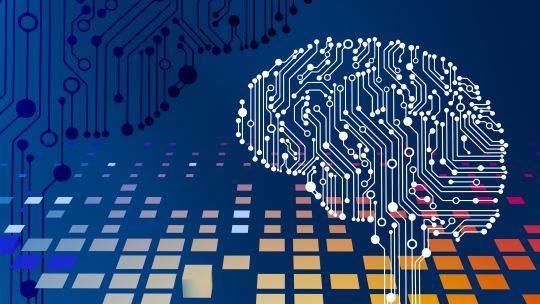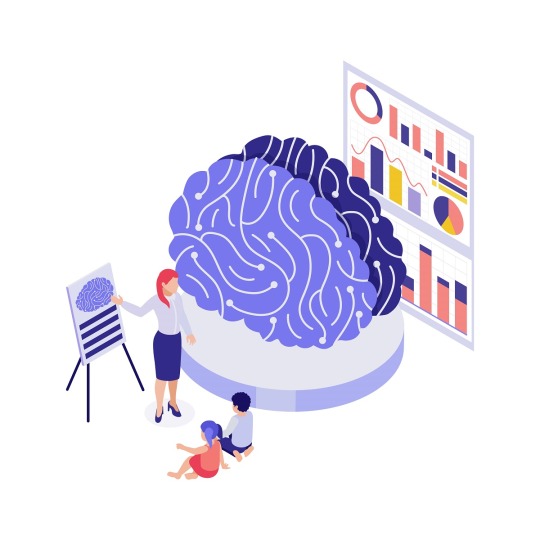#Cognitive Analytics
Explore tagged Tumblr posts
Text
The Road to Decision Nirvana: Why Data Still Reigns Supreme
We all strive for perfect decision-making. But let’s face it, flipping a coin isn’t always the answer. Decision Making vs Decision SupportThe Data Dilemma:The Takeaway: Decision Making vs Decision Support That’s where decision support systems (DSS) come in. These clever tools analyse data, run simulations, and offer insights, but they leave the final call to you. They’re the ultimate research…

View On WordPress
0 notes
Text
So, in this comprehensive guide, we delve into the realm of cognitive analytics, exploring its principles, applications, and the tangible benefits with the help of data analytics services in hyderabad it offers to businesses across various sectors.
0 notes
Text
What is Cognitive Analytics and How Does It Benefit Businesses?

Cognitive analytics is an intelligent technology that covers multiple analytical techniques to analyze large data sets and give structure to unstructured data. Go through the blog to learn how cognitive analytics helps businesses achieve better outcomes.
0 notes
Text
Common Cognitive Analytics Use Cases for Various Industries

Cognitive analytics is an intelligent technology that covers multiple analytical techniques to analyze large data sets and give structure to unstructured data. Read this blog to learn how different sectors use cognitive analytics in their businesses.
0 notes
Text

Unleash the Potential of Cognitive Analytics in 2024
Learn how cognitive data analytics with the power of intelligent technologies can help make data more accessible for better business decisions.
0 notes
Text
Generative AI Video: An Uncut, Unedited Webinar Sneak Peek with Bill Michels, Rob Handfield, (and Dr. Marcell Vollmer*)
With 900 plus radio interviews under my belt as a host, plus numerous television and webinar appearances, the only thing I have enjoyed more than the live broadcasts are the green room discussions before going live. While the live events are energized and engaging, the raw, uncut, and unedited discussions have a different feel that is not as formal and can be unpredictable. Joining me on…

View On WordPress
#Autonomous Procurement#Bill Michels#Cognitive Analytics#Dr. Marcell Vollmer#GenerativeAI#Interactive Intelligence#Rob Handfield
0 notes
Text

August 31, 1923 Journals of Anais Nin 1923-1927 [volume 3]
#anais nin#august#august 31#analytical reflection#cognitive introspection#literature#words#beauty#quotes#academia#dark academia#quote#lit#books#books and libraries#reading#quote of the day#bookworm#love#book quotes#prose#booklr#bibliophile#excerpt#light academia#journal
209 notes
·
View notes
Text
Me when putting together symbolism and concepts and metaphors and silly stuff into my stories: :D
Me when analyzing other people's stories (my brain is empty and I have no thoughts): D:
#writeblr#Different from my usual posts but meow meow#writers on tumblr#writing memes#I hate having cognitive issues from both mental and physical issues#Because then I can't be as analytical as everyone else#Oughhhh dying#/nsrs
8 notes
·
View notes
Text
The Next Tech Gold Rush: Why Investors Are Flocking to the Brain-Computer Interface Market

Introduction
The Global Brain-Computer Interface Market is undergoing transformative growth, driven by technological advancements in neuroscience, artificial intelligence (AI), and wearable neurotechnology. In 2024, the market was valued at USD 54.29 billion and is projected to expand at a CAGR of 10.98% in the forecast period. The increasing adoption of BCI in healthcare, neurorehabilitation, assistive communication, and cognitive enhancement is propelling demand. Innovations such as AI-driven neural signal processing, non-invasive EEG-based interfaces, and biocompatible neural implants are enhancing the precision, usability, and real-time capabilities of BCI solutions. Growing investments in neurotechnology research, coupled with regulatory support, are accelerating industry advancements, paving the way for broader clinical and consumer applications.
Request Sample Report PDF (including TOC, Graphs & Tables): https://www.statsandresearch.com/request-sample/40646-global-brain-computer-interface-bci-market
Brain-Computer Interface Market Overview
Brain-Computer Interface Market Driving Factors:
Surging Demand in Healthcare Applications – BCIs are transforming neurorehabilitation, prosthetic control, and assistive communication, benefiting individuals with neurological disorders such as ALS, Parkinson's disease, and epilepsy.
Advancements in AI & Machine Learning – AI-driven brainwave decoding and neural signal processing are improving the accuracy of BCI systems, leading to enhanced cognitive training and neurofeedback applications.
Expansion into Consumer Electronics – Wearable BCI technology is gaining momentum in brainwave-controlled devices, VR gaming, and hands-free computing.
Government & Private Sector Investments – Increased funding in non-invasive neural interfaces is supporting BCI research and commercialization.
Military & Defense Applications – BCIs are being explored for drone control, pilot augmentation, and direct brain-to-computer communication for enhanced operational efficiency.
Get up to 30%-40% Discount: https://www.statsandresearch.com/check-discount/40646-global-brain-computer-interface-bci-market
Brain-Computer Interface Market Challenges:
High Development Costs – The cost of R&D and complex neural signal interpretation hinders scalability.
Regulatory & Ethical Concerns – The use of neural data raises privacy and cybersecurity issues, necessitating stringent data protection measures.
Hardware Limitations – The variability in electrical noise, signal fidelity, and device usability poses significant engineering challenges.
Key Brain-Computer Interface Market Trends:
1. Non-Invasive BCIs Gaining Traction
Non-invasive BCIs are dominating the market due to their ease of use, affordability, and growing consumer adoption. Wireless EEG headsets, dry-electrode systems, and AI-powered brainwave analytics are revolutionizing applications in mental wellness, cognitive training, and VR gaming.
2. Brain-Computer Cloud Connectivity
BCIs integrated with cloud computing enable real-time brain-to-brain communication and remote neural data sharing, unlocking potential in telemedicine and collaborative research.
3. Rise of Neuroprosthetics & Exoskeletons
Innovations in brain-controlled prosthetics and robotic exoskeletons are restoring mobility to individuals with severe motor impairments, fostering independence and quality of life.
4. Neuromodulation & Brain Stimulation Advancements
The development of brain-stimulation-based BCIs is expanding therapeutic applications, aiding in the treatment of depression, epilepsy, and PTSD.
Brain-Computer Interface Market Segmentation:
By Type:
Non-Invasive BCIs – Holds the largest market share due to its widespread use in rehabilitation, gaming, and consumer applications.
Invasive BCIs – Preferred for high-precision neural interfacing, primarily in neuroprosthetics and brain-controlled robotics.
By Component:
Hardware – Accounts for 43% of the market, including EEG headsets, neural implants, and biosignal acquisition devices.
Software – Growing rapidly due to AI-driven brainwave decoding algorithms and cloud-based neurocomputing solutions.
By Technology:
Electroencephalography (EEG) – Largest segment (55% brain-computer interface market share), widely used for non-invasive brainwave monitoring and neurofeedback.
Electrocorticography (ECoG) – Preferred for high-fidelity neural signal acquisition in brain-controlled prosthetics.
Functional Near-Infrared Spectroscopy (fNIRS) – Emerging as a viable alternative for real-time hemodynamic brain monitoring.
By Connectivity:
Wireless BCIs – Dominating the market with increasing adoption in wearable smart devices and mobile applications.
Wired BCIs – Preferred in clinical and research settings for high-accuracy data acquisition.
By Application:
Medical – Leading segment, driven by applications in neuroprosthetics, neurorehabilitation, and neurological disorder treatment.
Entertainment & Gaming – Expanding due to brainwave-controlled VR, immersive gaming, and hands-free computing.
Military & Defense – BCIs are being explored for combat simulations, brain-controlled robotics, and AI-assisted warfare.
By End User:
Hospitals & Healthcare Centers – Holds 45% market share, expected to grow at 18% CAGR.
Research Institutions & Academics – Significant growth driven by increasing investments in brain signal processing and neuroengineering.
Individuals with Disabilities – Rising demand for assistive BCI solutions, including brain-controlled wheelchairs and prosthetics.
By Region:
North America – Leading with 40% market share, driven by strong investments in neurotech research and medical applications.
Europe – Projected to grow at 18% CAGR, supported by technological advancements in neural interface research.
Asia Pacific – Expected to expand at 21.5% CAGR, fueled by increasing adoption of consumer BCIs and AI-driven neuroanalytics.
South America & Middle East/Africa – Emerging markets witnessing gradual adoption in healthcare and research sectors.
Competitive Landscape & Recent Developments
Key Brain-Computer Interface Market Players:
Medtronic
Natus Medical Incorporated
Compumedics Neuroscan
Brain Products GmbH
NeuroSky
EMOTIV
Blackrock Neurotech
Notable Industry Advancements:
March 2024: Medtronic unveiled an advanced invasive BCI system for Parkinson’s disease and epilepsy treatment.
January 2024: NeuroSky introduced an EEG-based wearable for neurofeedback training and mental wellness.
April 2023: Blackrock Neurotech launched an ECoG-based brain-controlled robotic prosthetic arm, enhancing mobility for individuals with disabilities.
February 2023: Brainco developed an AI-powered BCI system for cognitive performance enhancement in education.
Purchase Exclusive Report: https://www.statsandresearch.com/enquire-before/40646-global-brain-computer-interface-bci-market
Conclusion & Future Outlook
The Global Brain-Computer Interface Market is poised for exponential growth, driven by rapid advancements in neural engineering, AI integration, and consumer-grade BCI applications. With increasing investment from healthcare institutions, tech firms, and government agencies, the BCI ecosystem is set to expand beyond traditional medical applications into consumer electronics, defense, and education.
Future developments will likely focus on:
Enhancing non-invasive BCI accuracy for mass-market adoption.
Strengthening cybersecurity protocols for neural data protection.
Advancing AI-driven neurocomputing for real-time brainwave analysis.
As regulatory frameworks mature and accessibility improves, BCIs will continue to reshape human-machine interaction, revolutionizing healthcare, communication, and cognitive augmentation.
Our Services:
On-Demand Reports: https://www.statsandresearch.com/on-demand-reports
Subscription Plans: https://www.statsandresearch.com/subscription-plans
Consulting Services: https://www.statsandresearch.com/consulting-services
ESG Solutions: https://www.statsandresearch.com/esg-solutions
Contact Us:
Stats and Research
Email: [email protected]
Phone: +91 8530698844
Website: https://www.statsandresearch.com
#Brain-Computer Interface Market#Neural Interface Industry#BCI Technology#Brain-Machine Interface#Neurotechnology Market#EEG-based Interface#Brainwave Technology#Neural Signal Processing#BCI Applications#Neuroprosthetics Market#Cognitive Computing#AI in Brain Interfaces#Healthcare BCI#Gaming BCI#Wearable Brain Devices#Brainwave Monitoring#Neurofeedback Systems#Non-invasive BCI#Invasive BCI#Neurostimulation Devices#Human-Computer Interaction#Brain Signal Analysis#Neuroinformatics#Neural Engineering#Mind-Controlled Devices#Brain Data Analytics#Future of BCI.
1 note
·
View note
Text
Unraveling the Many Facets of Intelligence: Beyond IQ
In the realm of human cognition, intelligence stands as a multifaceted gem, with each facet representing a unique dimension of mental ability. Intelligence is not a monolithic concept; rather, it encompasses various aspects, each contributing to our capacity to navigate, understand, and interact with the world around us.
Here are some of the key aspects of intelligence:
Cognitive Intelligence: This is often what people think of when they refer to intelligence. It encompasses problem-solving abilities, critical thinking, reasoning, and the capacity to acquire and apply knowledge. It's commonly measured through IQ tests.
Emotional Intelligence (EQ): EQ involves understanding and managing one's own emotions and the emotions of others. It's crucial for effective interpersonal relationships, empathy, and social awareness.
Creativity: Creative intelligence relates to the ability to generate novel ideas, approaches, and solutions. It involves thinking "outside the box" and coming up with original concepts.
Practical Intelligence: Also known as "street smarts," practical intelligence is the ability to adapt to and thrive in real-world situations. It involves common sense, problem-solving in everyday life, and adapting to various life challenges.
Analytical Intelligence: This is the capacity to break down complex problems into their components, understand the relationships between these components, and use logic and critical thinking to solve problems.
Memory: Memory is an essential aspect of intelligence. It involves the ability to store, retrieve, and apply information. Different types of memory include short-term memory, long-term memory, and working memory.
Social Intelligence: Social intelligence relates to an individual's ability to navigate complex social situations effectively. It includes skills such as understanding social norms, communication, and forming relationships.
Learning Ability: Intelligence is closely tied to an individual's capacity to learn. This includes the speed at which new information is acquired and the effectiveness of the learning process.
Intuition: Intuition is a type of intelligence that involves making decisions based on "gut feelings" and past experiences rather than explicit reasoning. It's often linked to pattern recognition and subconscious information processing.
Intrapersonal Intelligence: This is an aspect of intelligence related to self-awareness, self-regulation, and understanding one's own thoughts and emotions. It's crucial for personal development and self-improvement.
Bodily-Kinesthetic Intelligence: This type of intelligence is associated with physical skills and coordination. Athletes, dancers, and artisans often excel in bodily-kinesthetic intelligence.
Linguistic Intelligence: Linguistic intelligence involves proficiency in language, including speaking, writing, and understanding complex written and spoken content. It's a central aspect of effective communication.
Mathematical-Logical Intelligence: This is the capacity to work with numbers, perform mathematical operations, and apply logical reasoning to solve problems. It's highly relevant in fields like mathematics, science, and engineering.
Spatial Intelligence: Spatial intelligence refers to the ability to understand and manipulate spatial relationships, visualize objects and scenes, and navigate effectively. It's crucial for activities like map-reading, architecture, and artistic design.
Naturalist Intelligence: Proposed by Howard Gardner, naturalist intelligence relates to the ability to understand, appreciate, and work with the natural world. It involves skills such as recognizing and categorizing living organisms and understanding natural systems.
Existential Intelligence: Some scholars propose that existential intelligence relates to contemplating deep philosophical and existential questions about life, death, and the human experience.
These aspects of intelligence are interrelated and can be developed and enhanced through learning, experiences, and various educational and life experiences. Different individuals may excel in specific aspects of intelligence, and this diversity contributes to the richness of human capabilities and potential.
#philosophy#epistemology#knowledge#learning#education#chatgpt#psychology#Intelligence#Cognitive Intelligence#Emotional Intelligence#Creativity#Practical Intelligence#Analytical Intelligence#Memory#Social Intelligence#Learning Ability#Intuition#Intrapersonal Intelligence#Bodily-Kinesthetic Intelligence#Linguistic Intelligence#Mathematical-Logical Intelligence#Spatial Intelligence#Naturalist Intelligence#Existential Intelligence#Human Potential
8 notes
·
View notes
Text
#Cognitive Analytics Market Size#Cognitive Analytics Market Trends#Cognitive Analytics Market Overview
0 notes
Text
From Firewall to Encryption: The Full Spectrum of Data Security Solutions

In today’s digitally driven world, data is one of the most valuable assets any business owns. From customer information to proprietary corporate strategies, the protection of data is crucial not only for maintaining competitive advantage but also for ensuring regulatory compliance and customer trust. As cyber threats grow more sophisticated, companies must deploy a full spectrum of data security solutions — from traditional firewalls to advanced encryption technologies — to safeguard their sensitive information.
This article explores the comprehensive range of data security solutions available today and explains how they work together to create a robust defense against cyber risks.
Why Data Security Matters More Than Ever
Before diving into the tools and technologies, it’s essential to understand why data security is a top priority for organizations worldwide.
The Growing Threat Landscape
Cyberattacks have become increasingly complex and frequent. From ransomware that locks down entire systems for ransom to phishing campaigns targeting employees, and insider threats from negligent or malicious actors — data breaches can come from many angles. According to recent studies, millions of data records are exposed daily, costing businesses billions in damages, legal penalties, and lost customer trust.
Regulatory and Compliance Demands
Governments and regulatory bodies worldwide have enacted stringent laws to protect personal and sensitive data. Regulations such as GDPR (General Data Protection Regulation), HIPAA (Health Insurance Portability and Accountability Act), and CCPA (California Consumer Privacy Act) enforce strict rules on how companies must safeguard data. Failure to comply can result in hefty fines and reputational damage.
Protecting Brand Reputation and Customer Trust
A breach can irreparably damage a brand’s reputation. Customers and partners expect businesses to handle their data responsibly. Data security is not just a technical requirement but a critical component of customer relationship management.
The Data Security Spectrum: Key Solutions Explained
Data security is not a single tool or tactic but a layered approach. The best defense employs multiple technologies working together — often referred to as a “defense-in-depth” strategy. Below are the essential components of the full spectrum of data security solutions.
1. Firewalls: The First Line of Defense
A firewall acts like a security gatekeeper between a trusted internal network and untrusted external networks such as the Internet. It monitors incoming and outgoing traffic based on pre-established security rules and blocks unauthorized access.
Types of Firewalls:
Network firewalls monitor data packets traveling between networks.
Host-based firewalls operate on individual devices.
Next-generation firewalls (NGFW) integrate traditional firewall features with deep packet inspection, intrusion prevention, and application awareness.
Firewalls are fundamental for preventing unauthorized access and blocking malicious traffic before it reaches critical systems.
2. Intrusion Detection and Prevention Systems (IDS/IPS)
While firewalls filter traffic, IDS and IPS systems detect and respond to suspicious activities.
Intrusion Detection Systems (IDS) monitor network or system activities for malicious actions and send alerts.
Intrusion Prevention Systems (IPS) not only detect but also block or mitigate threats in real-time.
Together, IDS/IPS adds an extra layer of vigilance, helping security teams quickly identify and neutralize potential breaches.
3. Endpoint Security: Protecting Devices
Every device connected to a network represents a potential entry point for attackers. Endpoint security solutions protect laptops, mobile devices, desktops, and servers.
Antivirus and Anti-malware: Detect and remove malicious software.
Endpoint Detection and Response (EDR): Provides continuous monitoring and automated response capabilities.
Device Control: Manages USBs and peripherals to prevent data leaks.
Comprehensive endpoint security ensures threats don’t infiltrate through vulnerable devices.
4. Data Encryption: Securing Data at Rest and in Transit
Encryption is a critical pillar of data security, making data unreadable to unauthorized users by converting it into encoded text.
Encryption at Rest: Protects stored data on servers, databases, and storage devices.
Encryption in Transit: Safeguards data traveling across networks using protocols like TLS/SSL.
End-to-End Encryption: Ensures data remains encrypted from the sender to the recipient without exposure in between.
By using strong encryption algorithms, even if data is intercepted or stolen, it remains useless without the decryption key.
5. Identity and Access Management (IAM)
Controlling who has access to data and systems is vital.
Authentication: Verifying user identities through passwords, biometrics, or multi-factor authentication (MFA).
Authorization: Granting permissions based on roles and responsibilities.
Single Sign-On (SSO): Simplifies user access while maintaining security.
IAM solutions ensure that only authorized personnel can access sensitive information, reducing insider threats and accidental breaches.
6. Data Loss Prevention (DLP)
DLP technologies monitor and control data transfers to prevent sensitive information from leaving the organization.
Content Inspection: Identifies sensitive data in emails, file transfers, and uploads.
Policy Enforcement: Blocks unauthorized transmission of protected data.
Endpoint DLP: Controls data movement on endpoint devices.
DLP helps maintain data privacy and regulatory compliance by preventing accidental or malicious data leaks.
7. Cloud Security Solutions
With increasing cloud adoption, protecting data in cloud environments is paramount.
Cloud Access Security Brokers (CASB): Provide visibility and control over cloud application usage.
Cloud Encryption and Key Management: Secures data stored in public or hybrid clouds.
Secure Configuration and Monitoring: Ensures cloud services are configured securely and continuously monitored.
Cloud security tools help organizations safely leverage cloud benefits without exposing data to risk.
8. Backup and Disaster Recovery
Even with the best preventive controls, breaches, and data loss can occur. Reliable backup and disaster recovery plans ensure business continuity.
Regular Backups: Scheduled copies of critical data stored securely.
Recovery Testing: Regular drills to validate recovery procedures.
Ransomware Protection: Immutable backups protect against tampering.
Robust backup solutions ensure data can be restored quickly, minimizing downtime and damage.
9. Security Information and Event Management (SIEM)
SIEM systems collect and analyze security event data in real time from multiple sources to detect threats.
Centralized Monitoring: Aggregates logs and alerts.
Correlation and Analysis: Identifies patterns that indicate security incidents.
Automated Responses: Enables swift threat mitigation.
SIEM provides comprehensive visibility into the security posture, allowing proactive threat management.
10. User Education and Awareness
Technology alone can’t stop every attack. Human error remains one of the biggest vulnerabilities.
Phishing Simulations: Train users to recognize suspicious emails.
Security Best Practices: Ongoing training on password hygiene, device security, and data handling.
Incident Reporting: Encourage quick reporting of suspected threats.
Educated employees act as a crucial line of defense against social engineering and insider threats.
Integrating Solutions for Maximum Protection
No single data security solution is sufficient to protect against today’s cyber threats. The most effective strategy combines multiple layers:
Firewalls and IDS/IPS to prevent and detect intrusions.
Endpoint security and IAM to safeguard devices and control access.
Encryption to protect data confidentiality.
DLP and cloud security to prevent leaks.
Backup and SIEM to ensure resilience and rapid response.
Continuous user training to reduce risk from human error.
By integrating these tools into a cohesive security framework, businesses can build a resilient defense posture.
Choosing the Right Data Security Solutions for Your Business
Selecting the right mix of solutions depends on your organization's unique risks, compliance requirements, and IT environment.
Risk Assessment: Identify critical data assets and potential threats.
Regulatory Compliance: Understand applicable data protection laws.
Budget and Resources: Balance costs with expected benefits.
Scalability and Flexibility: Ensure solutions grow with your business.
Vendor Reputation and Support: Choose trusted partners with proven expertise.
Working with experienced data security consultants or managed security service providers (MSSPs) can help tailor and implement an effective strategy.
The Future of Data Security: Emerging Trends
As cyber threats evolve, data security technologies continue to advance.
Zero Trust Architecture: Assumes no implicit trust and continuously verifies every access request.
Artificial Intelligence and Machine Learning: Automated threat detection and response.
Quantum Encryption: Next-generation cryptography resistant to quantum computing attacks.
Behavioral Analytics: Identifying anomalies in user behavior for early threat detection.
Staying ahead means continuously evaluating and adopting innovative solutions aligned with evolving risks.
Conclusion
From the traditional firewall guarding your network perimeter to sophisticated encryption safeguarding data confidentiality, the full spectrum of data security solutions forms an essential bulwark against cyber threats. In a world where data breaches can cripple businesses overnight, deploying a layered, integrated approach is not optional — it is a business imperative.
Investing in comprehensive data security protects your assets, ensures compliance, and most importantly, builds trust with customers and partners. Whether you are a small business or a large enterprise, understanding and embracing this full spectrum of data protection measures is the key to thriving securely in the digital age.
#azure data science#azure data scientist#microsoft azure data science#microsoft certified azure data scientist#azure databricks#azure cognitive services#azure synapse analytics#data integration services#cloud based ai services#mlops solution#mlops services#data governance. data security services#Azure Databricks services
0 notes
Text
Does 'Common Sense' Actually Exist?
The Conversation That Started It All A few nights ago, I found myself on the phone with a good friend discussing something entirely unrelated when he casually dropped the phrase, “Well, it’s just common sense.” That simple remark derailed our entire conversation for the next 30 minutes. I asked him to define what he meant by “common sense.” He couldn’t. Not really. He gave some vague examples,…
#adaptive intelligence#AI common sense#analytical thinking#Aristotle sensus communis#artificial intelligence limitations#behavioral economics#brain architecture#brain processing speed#clever sillies#cognitive anthropology#cognitive biases#cognitive development#cognitive efficiency#cognitive flexibility#cognitive measurement#cognitive processing#cognitive psychology#cognitive reflection test#cognitive relativity#cognitive science#conventional wisdom#critical reasoning#critical thinking#cross-cultural cognition#cultural assumptions#cultural cognition#cultural intelligence#cultural psychology#cultural relativity#decision making
0 notes
Text
Grace as Coherence: The Neurobiosemiotic Architecture of Life-Functioning | ChatGPT4o
[Download Full Document (PDF)] This white paper introduces a new paradigm: Emotion is not a reaction. It is the recursive, semiotic signal of coherence across all levels of life. From cellular energetics to social interaction, emotion arises as the medium through which life evaluates, expresses, and restores its own alignment. The model we present — the Neurobiosemiotic Architecture of…
#affective neuroscience#Analytic Idealism#Barrett#Biosemiotics#ChatGPT#Coherence#Deacon#embodied cognition#emotion#EZ Water#Grace#Healing#interoception#Kastrup#life-functions#life-value axiology#McMurtry#Mitochondria#neuroception#Panksepp#participation#Polyvagal Theory#Predictive Coding#regenerative design#Solms#structured water#transformation#vagal tone
1 note
·
View note
Text
Living Intelligence: The Convergence of AI, Biotechnology, and Advanced Sensors in Education
By Ariel Can the classroom of the future actually learn from students? Imagine an environment where lessons adapt in real-time to each student’s needs, where smart sensors monitor cognitive load, and where AI-driven tutors adjust content dynamically to ensure mastery. This is the emerging reality of Living Intelligence—a cutting-edge blend of artificial intelligence, biotechnology, and advanced…
#adaptive learning environments#ai#AI in education#AI-assisted grading#AI-driven curriculum development#AI-driven lesson plans#AI-powered tutors#AR and VR in education#artificial intelligence in schools#biometric feedback in education#biotechnology in education#cognitive engagement tracking#digital learning transformation#education#educational neuroscience#educational technology trends#ethical AI in education#future of learning#future of STEM education#immersive learning experiences#integrating AI in schools#interactive learning environments#learning#machine learning in schools#next-gen education technology#personalized learning with AI#predictive analytics in education#real-time learning analytics#real-time student assessment#smart classrooms
0 notes
Text
Robert Pierce, Co-Founder & Chief Science Officer at DecisionNext – Interview Series
New Post has been published on https://thedigitalinsider.com/robert-pierce-co-founder-chief-science-officer-at-decisionnext-interview-series/
Robert Pierce, Co-Founder & Chief Science Officer at DecisionNext – Interview Series


Bob Pierce, PhD is co-founder and Chief Science Officer at DecisionNext. His work has brought advanced mathematical analysis to entirely new markets and industries, improving the way companies engage in strategic decision making. Prior to DecisionNext, Bob was Chief Scientist at SignalDemand, where he guided the science behind its solutions for manufacturers. Bob has held senior research and development roles at Khimetrics (now SAP) and ConceptLabs, as well as academic posts with the National Academy of Sciences, Penn State University, and UC Berkeley. His work spans a range of industries including commodities and manufacturing and he’s made contributions to the fields of econometrics, oceanography, mathematics, and nonlinear dynamics. He holds numerous patents and is the author of several peer reviewed papers. Bob holds a PhD in theoretical physics from UC Berkeley.
DecisionNext is a data analytics and forecasting company founded in 2015, specializing in AI-driven price and supply forecasting. The company was created to address the limitations of traditional “black box” forecasting models, which often lacked transparency and actionable insights. By integrating AI and machine learning, DecisionNext provides businesses with greater visibility into the factors influencing their forecasts, helping them make informed decisions based on both market and business risk. Their platform is designed to improve forecasting accuracy across the supply chain, enabling customers to move beyond intuition-based decision-making.
What was the original idea or inspiration behind founding DecisionNext, and how did your background in theoretical physics and roles in various industries shape this vision?
My co-founder Mike Neal and I have amassed a lot of experience in our previous companies delivering optimization and forecasting solutions to retailers and commodity processors. Two primary learnings from that experience were:
Users need to believe that they understand where forecasts and solutions are coming from; and
Users have a very hard time separating what they think will happen from the likelihood that it will actually come to pass.
These two concepts have deep origins in human cognition as well as implications in how to create software to solve problems. It’s well known that a human mind is not good at calculating probabilities. As a Physicist, I learned to create conceptual frameworks to engage with uncertainty and build distributed computational platforms to explore it. This is the technical underpinning of our solutions to help our customers make better decisions in the face of uncertainty, meaning that they cannot know how markets will evolve but still have to decide what to do now in order to maximize profits in the future.
How has your transition to the role of Chief Science Officer influenced your day-to-day focus and long-term vision for DecisionNext?
The transition to CSO has involved a refocusing on how the product should deliver value to our customers. In the process, I have released some day to day engineering responsibilities that are better handled by others. We always have a long list of features and ideas to make the solution better, and this role gives me more time to research new and innovative approaches.
What unique challenges do commodities markets present that make them particularly suited—or resistant—to the adoption of AI and machine learning solutions?
Modeling commodity markets presents a fascinating mix of structural and stochastic properties. Combining this with the uncountable number of ways that people write contracts for physical and paper trading and utilize materials in production results in an incredibly rich and complicated field. Yet, the math is considerably less well developed than the arguably simpler world of stocks. AI and machine learning help us work through this complexity by finding more efficient ways to model as well as helping our users navigate complex decisions.
How does DecisionNext balance the use of machine learning models with the human expertise critical to commodities decision-making?
Machine learning as a field is constantly improving, but it still struggles with context and causality. Our experience is that there are aspects of modeling where human expertise and supervision are still critical to generate robust, parsimonious models. Our customers generally look at markets through the lens of supply and demand fundamentals. If the models do not reflect that belief (and unsupervised models often do not), then our customers will generally not develop trust. Crucially, users will not integrate untrusted models into their day to day decision processes. So even a demonstrably accurate machine learning model that defies intuition will become shelfware more likely than not.
Human expertise from the customer is also critical because it is a truism that observed data is never complete, so models represent a guide and should not be mistaken for reality. Users immersed in markets have important knowledge and insight that is not available as input to the models. DecisionNext AI allows the user to augment model inputs and create market scenarios. This builds flexibility into forecasts and decision recommendations and enhances user confidence and interaction with the system.
Are there specific breakthroughs in AI or data science that you believe will revolutionize commodity forecasting in the coming years, and how is DecisionNext positioning itself for those changes?
The advent of functional LLMs is a breakthrough that will take a long time to fully percolate into the fabric of business decisions. The pace of improvements in the models themselves is still breathtaking and difficult to keep up with. However, I think we are only at the beginning of the road to understanding the best ways to integrate AI into business processes. Most of the problems we encounter can be framed as optimization problems with complicated constraints. The constraints within business processes are often undocumented and contextually rather than rigorously enforced. I think this area is a huge untapped opportunity for AI to both discover implicit constraints in historical data, as well as build and solve the appropriate contextual optimization problems.
DecisionNext is a trusted platform to solve these problems and provide easy access to critical information and forecasts. DecisionNext is developing LLM based agents to make the system easier to use and perform complicated tasks within the system at the user’s direction. This will allow us to scale and add value in more business processes and industries.
Your work spans fields as diverse as oceanography, econometrics, and nonlinear dynamics. How do these interdisciplinary insights contribute to solving problems in commodities forecasting?
My diverse background informs my work in three ways. First, the breadth of my work has prohibited me from going too deep into one specific area of Math. Rather I’ve been exposed to many different disciplines and can draw on all of them. Second, high performance distributed computing has been a through line in all the work I’ve done. Many of the techniques I used to cobble together ad hoc compute clusters as a grad student in Physics are used in mainstream frameworks now, so it all feels familiar to me even when the pace of innovation is rapid. Last, working on all these different problems inspires a philosophical curiosity. As a grad student, I never contemplated working in Economics but here I am. I don’t know what I’ll be working on in 5 years, but I know I’ll find it intriguing.
DecisionNext emphasizes breaking out of the ‘black box’ model of forecasting. Why is this transparency so critical, and how do you think it impacts user trust and adoption?
A prototypical commodities trader (on or off an exchange) is someone who learned the basics of their industry in production but has a skill for betting in a volatile market. If they don’t have real world experience in the supply side of the business, they don’t earn the trust of executives and don’t get promoted as a trader. If they don’t have some affinity for gambling, they stress out too much in executing trades. Unlike Wall Street quants, commodity traders often don’t have a formal background in probability and statistics. In order to gain trust, we have to present a system that is intuitive, fast, and touches their cognitive bias that supply and demand are the primary drivers of large market movements. So, we take a “white box” approach where everything is transparent. Usually there’s a “dating” phase where they look deep under the hood and we guide them through the reasoning of the system. Once trust is established, users don’t often spend the time to go deep, but will return periodically to interrogate important or surprising forecasts.
How does DecisionNext’s approach to risk-aware forecasting help companies not just react to market conditions but proactively shape their strategies?
Commodities trading isn’t limited to exchanges. Most companies only have limited access to futures to hedge their risk. A processor might buy a listed commodity as a raw material (cattle, perhaps), but their output is also a volatile commodity (beef) that often has little price correlation with the inputs. Given the structural margin constraint that expensive facilities have to operate near capacity, processors are forced to have a strategic plan that looks out into the future. That is, they cannot safely operate entirely in the spot market, and they have to contract forward to buy materials and sell outputs. DecisionNext allows the processor to forecast the entire ecosystem of supply, demand, and price variables, and then to simulate how business decisions are affected by the full range of market outcomes. Paper trading may be a component of the strategy, but most important is to understand material and sales commitments and processing decisions to ensure capacity utilization. DecisionNext is tailor made for this.
As someone with a deep scientific background, what excites you most about the intersection of science and AI in transforming traditional industries like commodities?
Behavioral economics has transformed our understanding of how cognition affects business decisions. AI is transforming how we can use software tools to support human cognition and make better decisions. The efficiency gains that will be realized by AI enabled automation have been much discussed and will be economically important. Commodity companies operate with razor thin margins and high labor costs, so they presumably will benefit greatly from automation. Beyond that, I believe there is a hidden inefficiency in the way that most business decisions are made by intuition and rules of thumb. Decisions are often based on limited and opaque information and simple spreadsheet tools. To me, the most exciting outcome is for platforms like DecisionNext to help transform the business process using AI and simulation to normalize context and risk aware decisions based on transparent data and open reasoning.
Thank you for the great interview, readers who wish to learn more should visit DecisionNext.
#ADD#adoption#agents#ai#Analysis#Analytics#approach#author#automation#background#beef#Behavioral economics#betting#Bias#black box#box#Business#clusters#cognition#Companies#complexity#computing#cso#curiosity#data#data analytics#data science#dating#decision making#DecisionNext
0 notes